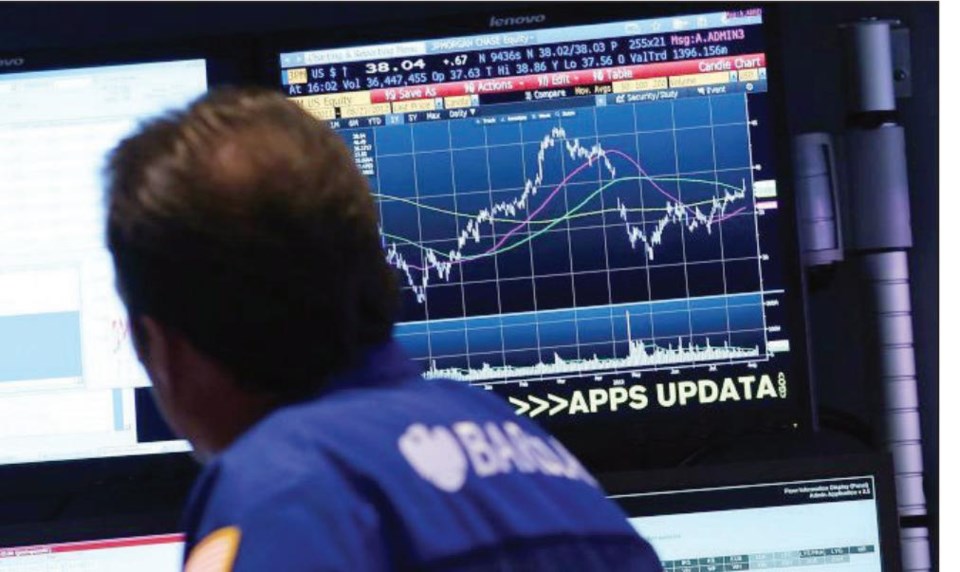As with all things in life, it is important to adapt as conditions change.
Like it or not, we are living in a quick-change, information-overload, society. It is tough to stay current on all economic, political and financial news.
Different opinions exist with respect to what investment strategy works best in this technology driven environment. Conventional wisdom has often supported the buy-and-hold approach with a focus on long-term thinking. Automated trading systems and a growing number of mutual and hedge fund managers with active strategies are on the other spectrum and often look for short-term trades - sometimes fractions of a second.
We will look at some of the factors we consider when deciding whether the intention is to hold an investment longer term or shorter term.
? Dividend yield is perhaps the easiest factor to examine when considering to hold a stock longer term. If a stock has a dividend yield less than two per cent, then you are really not getting paid to hold the stock on income alone. If you are buying a stock with a dividend yield less than two per cent we feel you should have the belief that the underlying share price will appreciate to an appropriate level over the time horizon you wish to hold it. Most stocks with a yield below two per cent would be classified as a growth stock and, in our opinion, should be traded. Establishing a target price and a sell-discipline will assist you in realizing profits. It can be frustrating to see a low-yielding stock appreciate and then subsequently decline without you earning income if the investment wasn't sold at high levels. The key with low-yielding stocks is to not get too greedy and to set a sell discipline.
? Sector is a very relevant factor for Canadians when considering how long to hold a stock. Within the 10 investment sectors in Canada, the materials and energy sectors represent 18.4 and 26.7 per cent, respectively. Combined, the two sectors make up 45.1 per cent of the TSX/S&P Composite Index. Collectively, we refer to precious metals, commodities, materials, and energy as resources. Resources have been steadily climbing as a combined weighting within the Index over the last decade. When we review risk and reward charts with new clients, resources are at the top - meaning they have the highest potential return but also have the highest risk. We would like to highlight some of the significant factors impacting the resource sector. Advances in technology have made it easier for companies around the world to discover and extract resources with higher efficiency. This has created more supply in this decade than previously expected. Offsetting the supply side is an increasing demand from China and other emerging markets for resources. A growing population, alternative energy solutions, environmental concerns as well as political, economic, and natural events have all caused shorter term fluctuations in resources. All of these factors have created a higher level of uncertainty surrounding both the shorterand longer-term demand and supply for resources around the world. Although Canadians may have a home country bias to investing, many of the investments within the Index are reliant on the world continuing to demand our resources.
? The economy is the toughest component to analyze. There is no hard number to look at or sector to classify. What makes this challenging is that political announcements such as a stimulus package distort how people now analyze economic data. We have seen days where bad economic data is released and the markets increase as people feel that governments will have no choice but to stimulate the economy through what is often referred to as quantitative easing. Quantitative easing is effectively printing money which is inflationary and often causes materials, such as gold, to increase in price. The flipside to this is when we have days where positive economic data is released and the markets have declined as the likelihood of quantitative easing is diminished. With government bodies having provided stimulus in the past, it does give investors another factor to consider. What people actually do is often different from what they should do now that the government intervention is part of the decision on whether to buy, hold or sell.
? There are many other factors that determine the strategy of whether to hold a stock short term or long term. Your risk tolerance and time horizon are key components to consider. Your tax situation is also important as investors have the ability to carry net capital losses back three years and forward indefinitely. Your tax situation is also important as investors have the ability to carry net capital losses back three years and forward indefinitely.
Your tax situation is also important as investors have the ability to carry net capital losses back three years and forward indefinitely.
In days past it was easier to buy a basket of dividendpaying stocks and interestbearing bonds and hold them for a longer period of time. A person could design a passive approach themselves and not worry about their investments during retirement.
It is more challenging to do this today given the increased volatility and low interest rates. Investors have to work a lot harder these days. Unless a person wants to be active every day monitoring their own investments, it is advisable to have a professional you trust assist you.
Kevin Greenard CA FMA CFP CIM is an associate portfolio manager with The Greenard Group at ScotiaMcLeod in Victoria. His column appears every second week. Call 250-389-2138.



